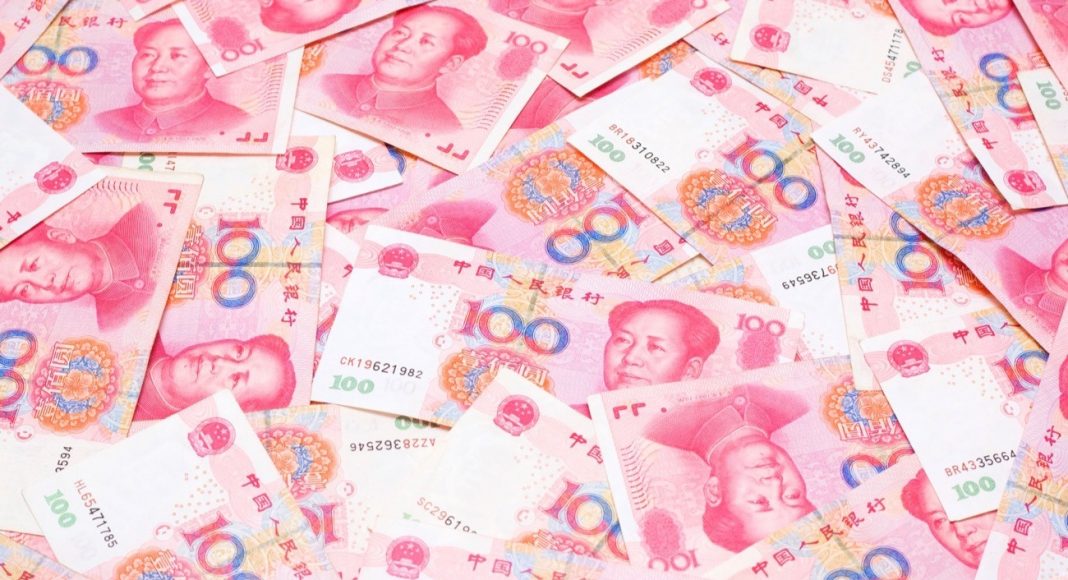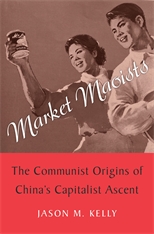In an excerpt from his book Market Maoists: The Communist Origins of China’s Capitalist Ascent, Jason M. Kelly explores the commercial relationships and selective adoption of commercial practices and norms that linked the Chinese Communist Party to international capitalism.
Editor’s note: The current debate in economics seems to lack a historical perspective. To try to address this deficiency, we decided to launch a Sunday column on ProMarket focusing on the historical dimension of economic ideas. You can read all of the pieces in the series here.
On a cold, clear, otherwise ordinary morning in January 1973, officials at China’s State Planning Commission in Beijing went to work. Most of them probably rode bicycles or walked to the office—Beijing was a city of few cars in the early 1970s. Some may have taken the bus. Today was a good day to arrive early. It was January 2, and before the workday ended, these planners would submit to leaders in the State Council a formal plan to launch the biggest foray into capitalist markets in the history of the People’s Republic of China (PRC).
At the heart of this proposal, which these officials had been developing for months, was a colossal buying spree: a staggering US$4.3 billion in new technologies and equipment—including entire production plants—all from the capitalist world, all for Communist China, all within three to five years. The plan’s authors may have felt their nerves that bright morning. The political climate seemed hardly ideal for such a bold proposal. After all, China remained in the grip of the Cultural Revolution. The chairman himself, Mao Zedong, was still very much alive and committed to anti-imperialism and socialist revolution. Evidence of the nation’s revolutionary fervor still filled the newspapers each day. Just that morning, the People’s Daily featured a New Year’s address by North Korean Korean leader Kim Il-Sung urging comrades to “hold high the revolutionary banner of anti-imperialist and anti-American struggle.” The daily quotation from Mao, in large print next to the masthead, proclaimed, “the 700 million Chinese people are the strong backup force of the Vietnamese people” in their fight against American imperialism.
None of this seemed to jibe with a proposal to import billions of dollars’ worth of goods produced, packaged, and peddled by capitalists from across the imperialist world, including the United States. And yet, the proposal, once submitted, sailed through the senior ranks of the Chinese Communist Party (CCP). Vice Premier Li Xiannian backed the program. Premier Zhou Enlai was a vocal advocate. Mao Zedong himself signed off on it.
Once approved, the “Four-Three Program” (Si San Fang’An), as it was dubbed, became one of the largest Chinese Communist trade initiatives ever, comparable only to the massive technical and economic assistance that China had received from the Soviet Union during the heyday of the Sino–Soviet alliance in the early 1950s. How was this possible? Beset by the xenophobia of the Cultural Revolution and devoted to an anti-imperialist, socialist, and revolutionary path to modernity, how was it that this China aspired to a multibillion-dollar trade program with the very capitalists who embodied the imperialist aggression that Mao’s China aimed to crush?
The Four-Three Program also doesn’t seem to fit Mao’s founding vision for a “new” China. Just months before the formal establishment of the People’s Republic of China in October 1949, Mao argued that the world was cleaving in two and China had to pick a side. “All Chinese without exception must lean either to the side of imperialism or to the side of socialism,” he said. “Sitting on the fence will not do, nor is there a third road.” This ultimatum seemed to rule out half measures and compromise. The Chinese people would take the road of socialism, a stance hardly conducive to blossoming trade with the capitalist world. For years, scholars have largely taken Mao at his word. The same Cold War framework of socialist solidarity and capitalist hostility that informed Mao’s outlook in 1949 has shaped how the world has thought about the way China came of age on the global stage under Mao’s reign.
“Rather than shun capitalist markets outright, Party traders adapted to them by selectively appropriating commercial practices and norms in an effort to expand access to markets abroad.”
The sensation created by Mao’s meeting with Richard Nixon during the US president’s historic trip to China in the winter of 1972, a few years before Mao’s death, is the exception that proves the rule. Nixon’s visit captivated the world precisely because it jarred with the prevailing perception of how revolutionary China fit within the wider world, a perception that still lingers today, long after Mao “left to meet Marx” and the Cold War became history.
The end of the Cold War spurred a new age of scholarship on China’s international experience under Mao as previously unseen documents from Communist and post-Communist states became available. This unprecedented access allowed historians to scrutinize aspects of China’s foreign relations to a degree unimaginable three decades ago. Yet much of this research has gravitated toward the perspective of Mao and his top lieutenants in Zhongnanhai, the central leadership compound in Beijing. There is a good reason for this. Mao was central to China’s foreign relations during the Cold War; his decisions set the course. But the tendency to emphasize Mao’s outlook also reinforces the mistaken impression of China during his rule as either raging against the capitalist world or contentedly detached from it. The reality was less doctrinaire, more nuanced, and often ideologically promiscuous. My book reveals how. It shifts focus away from the wars, alliances, and clean divisions that typically orient studies of China’s international experience under Mao and explores instead the commercial relationships that linked the Chinese Communist Party to international capitalism from the early days of the Pacific War to the waning years of the Cultural Revolution.
A close examination of these commercial ties breaks apart the established narrative of Cold War binaries to uncover an adaptive mode of CCP engagement with international capitalism that transcended the Cold War and linked Mao’s revolution to larger historical currents sweeping the globe. Rather than shun capitalist markets outright, Party traders adapted to them by selectively appropriating commercial practices and norms in an effort to expand access to markets abroad.
This sustained interaction and adaptation produced a paradoxical momentum in the making of Chinese Communism: just as China’s anticapitalist revolution was coming into full bloom at home, the Chinese Communist Party was also wading deeper and deeper into capitalist markets abroad. Senior Party officials railed against the conjoined threats of capitalism and imperialism, but at the same time, and with less fanfare, Chinese Communist traders diligently sought deals with firms and governments across the capitalist world. These committed revolutionaries scoured global markets for everything from wristwatches and buses to buyers of soybeans, bicycles, and tea. The deals they struck, in places such as Hong Kong, London, Tokyo, and Geneva, reached into the hundreds of millions of dollars each year.
These figures may not surprise some. Economists, economic historians, and seasoned traders have long known that Mao’s China never sequestered itself fully from overseas capitalist markets. To some among this group, this capitalist trade might seem inconsequential. Communist China’s early foreign trade amounted to just a sliver of the nation’s total economy—about 5 percent of China’s gross national product as late as 1978, the US Central Intelligence Agency (CIA) once estimated—and trade with capitalists constituted only part of that share. The surge of trade and investment that epitomized the Reform and Opening period of the late 1970s and early 1980s, after Mao’s death in 1976, seems to diminish the significance of early PRC trade even more. China’s total trade exploded during the last decades of the twentieth century, from just over US$20 billion in 1978 to over US$474 billion in 2000—an increase of over 2,000 percent.9 Compared to this later growth, Mao-era trade can seem trivial. But statistics tell only part of the story.
Beneath the modest tabulations of Maoist trade lie something of more lasting significance—the transactions themselves. More than goods and currencies changed hands between Mao’s traders and their capitalist counterparts. These deals also served as sites for the exchange of ideas, habits, and beliefs, and as venues where individuals, institutions, and the logics that guided them formed subtle but lasting legacies.
These legacies took several shapes. Most fundamental were the skills and knowledge that traders developed. Some learned to craft advertisements that would resonate with capitalist consumers. Others mastered contract law, tracked freight rates, analyzed insurance markets, or studied the intricacies of product packaging. A more diffuse legacy was the simple tradition of an unbroken market presence. With each transaction, Party traders retained a foothold in markets around the world, giving the CCP its own slender stake in the global economy throughout the Mao era. Securing this foothold was a system of trade offices designed to foster commercial interaction with foreign capitalists. These institutions ranged in size from entire divisions within the central Ministry of Foreign Trade in Beijing to small-time front companies in Hong Kong’s central business district, but all of them operated under CCP mandates that encouraged and expected them to expand trade with foreign capitalists.
By pursuing this goal, these institutions upheld the Party’s tradition of market presence and served as repositories for the skills, knowledge, and experience that supported each transaction. But the most consequential of legacies is discernible only in retrospect because it emerged so gradually and inadvertently. Senior economic officials in Beijing and working-level Chinese traders in Hong Kong, Europe, Japan, and elsewhere all had to learn the habits, techniques, expectations, and even the aesthetics of international capitalist commerce to trade productively on behalf of the Chinese Communist Party.
As these traders and planners negotiated prices, delivery dates, and other terms, they also negotiated what it meant to be a representative from the “new” socialist Chinese state—how to behave, when to reject capitalist conventions, and when to concede and conform. Although none realized it at the time, these officials were learning to reconcile revolutionary aspirations at home with market realities abroad, an iterative process that required them continually to relate China’s emerging identity as a modern socialist state to the practices and mentalities of capitalist commerce. This gradual reconciliation, along with the skills, knowledge, experience, and institutions that sustained it all, helped to lay the groundwork for the Four-Three Program in the early 1970s, and ultimately, China’s historic turn to global capitalist markets after Mao’s death.
Excerpted from Market Maoists: The Communist Origins of China’s Capitalist Ascent by Jason M. Kelly, published by Harvard University Press. Copyright © 2021 by the President and Fellows of Harvard College. Used by permission. All rights reserved.
Learn more about our disclosure policy here.







